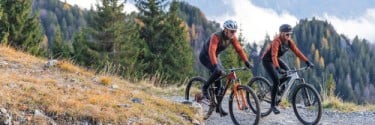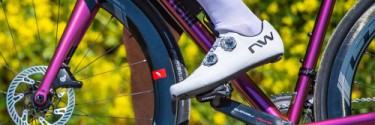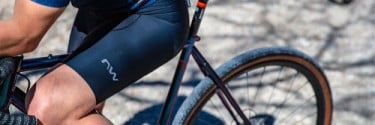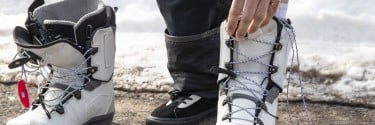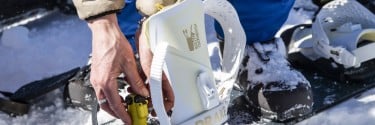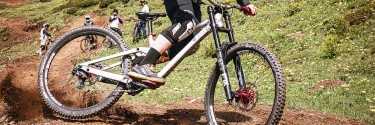
Traveling light, reconnecting with nature, exploring by pedaling is not just an adventure. To fully enjoy bike travel requires organization and foresight. Find out how to make the most of your next bikepacking trip
Travel yes, pedaling. The growing interest in bikepacking and the spread of sustainable travel experiences are trends that have little to do with a momentary trend and tell, rather, of an increasingly shared need: escape from daily stress and reconnect with the environment.
If bikepacking intrigues you or you practice it, read on: we will provide you with inspirations and unmissable tips for your next adventure in the saddle.
Bikepacking is good for you and your host territory
Why should we embark on at least one trip by bikepacking? The objective benefits of this mode of travel are many, both for the land and for the traveler.
Bikepacking, in addition to introducing you to new, unexplored worlds, can introduce you to worlds known to you but through different eyes. Traveling by bike allows you to slow down the pace and immerse yourself in a dimension of discovery, not only when you arrive at your destination, but throughout your journey. It is an all-around immersive experience, where the journey is no longer a function of the destination.
The itinerary, with bikepacking, becomes the protagonist, the territory that is crossed by pedaling embraces the explorer by calling in all its distinctive elements: the natural landscape and not least, architecture, culture and locals, with whom it is easier to establish contact given the very nature of the means of transport.
The bicycle is not only a sustainable means with which to cross and visit places without compromising the balance and with zero emissions. The bicycle allows one to traverse places and be traversed by them.
If you are still not convinced, read on: we will offer advice from experienced bikepackers.
Plan your itinerary, and factor in the unexpected, with advice from Montanus The Wild Side
Baggage
For many it is the biggest obstacle. Reducing one's luggage to the bare essentials may prove to be an advantage rather than a limitation. Traveling minimal requires careful organization before departure but will allow you, once on the road, to savor an authentic feeling of freedom and lightness.
It really has to be said, it's all about organization-and foresight. But if you've never planned a bike trip or need a boost for your next adventure, here are some must-have tips from some excellent bikepackers.
Francis and George began a journey nine years ago that led them to explore wild and remote places in search of what they call "the wild side."
Thus was born Montanus, a true primal instinct made of experiences. An experience that opened our eyes to extraordinary lands and reconnected us to the wildest nature. Here is a little taste to get to know the Montanus better: don't miss their adventures, the last one in the island of Socotra.
Francis and George suggest, with a valuable five-point guide, the key aspects to study and anticipate before a bicycle trip.
Choosing the itinerary
Having identified the region you would like to explore, it is a good idea to make sure to create an itinerary suitable for the participants' level of physical and mental preparedness. A key aspect is logistics, so check and arrange transfers, especially if the chosen itinerary will be from point A to point B.
A loop itinerary (in which the starting point coincides with the finishing point) will make logistical organization easier. Next, it will be necessary to identify points where it will be possible to refuel with food and water.
"For example," Francis recounts, "to ride the 'Iceland Divide,' the route we mapped out to cross Iceland from north to south, it was necessary to be completely autonomous for food while for water we only took a couple of water bottles with us. This was because food was not available along the route, while water was almost always within reach thanks to the many waterways from the glaciers."
Bike set-up
The bike will need to be adapted to the route. The choice of tires will change depending on the terrain (e.g. sandy, stony or muddy) you will be riding on. If water supplies will not be as frequent, it will be necessary to prepare the bike to carry a sufficient number of water bottles.
The same goes for food, providing for a classic set-up or adding a rear rack instead of a saddle bag in the case of an upgraded set-up.
The bike will also have to be customized in its technical aspect according to specific needs and requirements. With experience you will learn how to customize your setup from time to time, depending on the specific characteristics of a route.
Clothing
When traveling by bike, you need to have with you not only the appropriate clothing for the weather conditions you will encounter on your trip, but also the clothing that will allow you to deal with adverse weather conditions. Bringing our own wardrobe will only serve to make the bike heavy: one must carefully choose what to bring and what to leave at home.
For example, a light, easily compressible down jacket will come in handy when temperatures require it, but it will also come in handy after being folded into its own compression bag as a pillow for a moment's rest.
Shoes play a crucial role, because they will be worn for many hours and for several days. They will need to be comfortable, suitable for heterogeneous weather conditions, and they will also need to have a sole that provides excellent grip on the ground. This is because in bikepacking, you sometimes have to push your bike even through difficult terrain. A shoe with a Goretex membrane, moreover, can guarantee you dry feet in rainy weather. That's why it's good to carefully choose the right shoes for your next riding trip.
"Bringing our wardrobe will only serve to make the bike heavy, you need to choose carefully what to bring and what to leave at home."
Below we suggest bikepacking kits for a total Northwave look:
Repair Kit
Bikepacking is based on self-sufficiency; you will not have a mechanic in your wake. In case of need you will have to get your hands dirty and try to fix the mechanical mishap that occurred.
Before you leave make sure you know how to fix at least one puncture (whether it be inner tube or tubeless) and undo a chain for a possible chain break.
You need a minimum of practice in your garage and a kit that contemplates at least a multi-tool with chain stripper, an inner tube, false chain link, spare shift wire.
Safety and connections
Last but not least. It is advisable to have a first aid kit with you, which can come in handy in case of a fall.
In case of a trip to remote places you will need to add a medicine kit.
If you will be traveling through areas not covered by a cellular network, rely on a system with satellite coverage, both in case you want to be in contact with those back home and in case of a call for help.
What about while traveling? Follow Giulia and Simona's advice so that every moment of your bikepacking day is memorable
We asked two outstanding explorers what tips they learned in the field to make the most of a day of travel in the saddle.
Giulia and Simona, talk about their bikepacking adventures in the Rebelside project. Don't miss their travelogue through Andalusia and be inspired by the wild scenery and unmistakable colors of the barren lands of the Andalusian deserts.
To experience adventurous but organized bikepacking, mark down Rebelside's tips. Here are the 5 tips to enjoy every moment of your day in the saddle:
- set off early in the morning, perhaps at the crack of dawn, to savor the sunrise, enjoy the morning coolness and have more daylight hours available to ride throughout the day;
- organize stops at villages or towns encountered along the way so that you can refresh yourself, refuel (with water and something to eat to take with you) and, why not, browse the alleys and old towns you pass through;
- always have something with you to munch on (dried fruit is ideal) and perhaps have micro snacks every couple of hours (or perhaps before a climb) so that you can recharge your batteries and replenish the energy expended;
- keep a powerbank handy to recharge devices (phone, gps, etc.) that always run out of power at the best of times;
- take your time to enjoy the views, stop to take photos, be enchanted before a panorama.
The extra tip
Take a notebook with you in which you can jot down as you go along emotions, places, names, impressions, and anything else that crosses our minds during the long hours in the saddle.


